



Last week’s board meeting was incredible. That’s not something you normally hear after a meeting! What really struck me was just how global the Global Plant Council now is. The Board consists of representatives from 10 different countries on 5 continents (Chile, Mexico, Canada, UK, Spain, India, Italy, China, Japan and Australia). Every one of us at that meeting was in some kind of lockdown. I was overwhelmed with just how connected we all are. It was quite emotional.
All of humanity is in this pandemic together. But we are also all connected through nature: the atmosphere with rising CO2 changing our climate; the heartbreaking destruction of habitats around the world; and our need to grow and distribute enough food to feed everyone. These things are not independent from one another. There is increasing evidence that zoonotic diseases, like COVID-19, HIV-AIDS and SARS-1, are more likely to arise where habitat destruction leads to the increasing juxtaposition of people and wild animals.
This pandemic should be a wake-up call. Sustainability is not only important, it is essential. Ecosystems need to be conserved, not just because they have a right to be preserved for their own sakes, but for the health and well-being of the human population. It is arrogant of humans to think we can do whatever we like with nature. Right now, nature is coming back to bite us.
Plants around the world are being driven to extinction by excessive use of resources, land clearing and climate change. We don’t even know how many plants there are in the world. At the most basic level, we may be losing plants with unique chemicals that could be used to cure diseases, unique genotypes of crop wild relatives that could be a source of traits to improve agricultural productivity and so on.
Agriculture is responsible for 26% of global greenhouse gases emissions, 70% of the freshwater use and occupies 50% of the habitable land surface. Plant scientists around the world are working to document species diversity, design conservation reserves, collect seeds for storage in seed banks, develop more efficient crops that use less fertiliser and water and are resistant to pests and diseases without the need for the application of large volumes of agrichemicals.
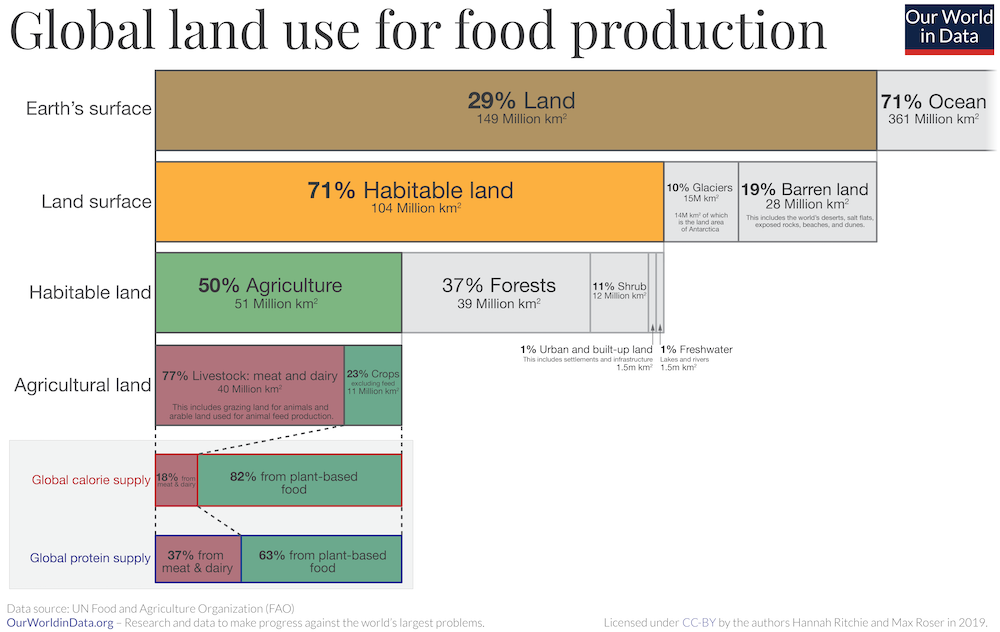
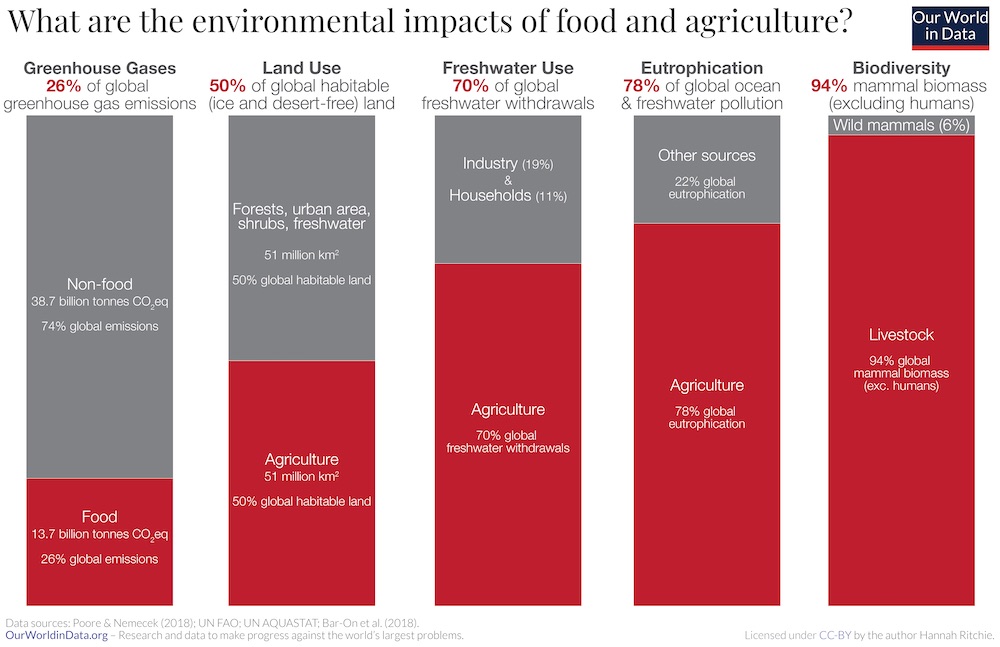
The Global Plant Council aims to increase the awareness plants, of the need to train plant scientists and to supply them with research funding. It seems crazy that we have to say this, but with a world inflicted with plant blindness, our first job is to get people to just open their eyes and see the plants around them and the central role they play. Just having an organisation called The Global Plant Council enables journalists and influencers to identify people to contact for comment in different countries. This is one reason why we are so keen to have representatives from all countries and from many different plant science organisations around the world.
In the past two years we have grown our social media presence by 50% percent annually, largely due to the efforts of our Chief Communications Officer, Dr Isabel Mendoza (currently locked down in Valencia, Spain). We are also expanding into different languages with a Spanish Twitter account and a new Weibo account to reach our Chinese followers. English maybe the current international language of science but if we want to reach people across the world, we need to communicate in different languages and on different platforms.
At this years’ GPC annual meeting we were planning to run a workshop on science communication with a special workshop run by the award-winning Italian science journalist Michele Catanzaro. We always hold our meetings in conjunction with a larger plant science conference, rotating around the world – last year it was at the ICAR meeting in Wuhan, and this year we planned to meet in Torino, Italy at Plant Biology Europe 2020. The conference has, of course, been postponed due to the raging pandemic. We really hope we can hold this fantastic workshop one way next year.
The annual business meeting this year will still need to be held and we will do that virtually. This is not easy given all the different time zones, but instead of an imposition, we should instead celebrate that the GPC is now truly global. The Era we live in, the Holocene, is characterised by possibly the highest biodiversity in the history of our planet. As we move into the Anthropocene, that is changing. Let’s work together to minimize the damage. It’s not going to be easy, but without plants, it’s impossible.
Author: Prof. Ros Gleadow, President of The Global Plant Council
Image credit: Free-Photos / Pixabay
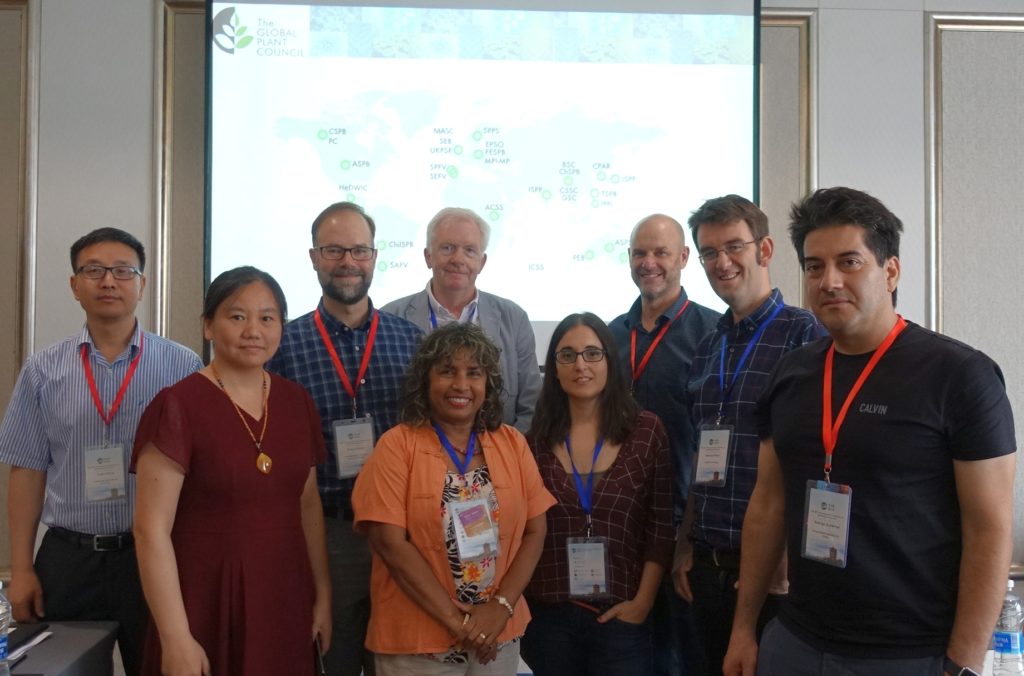
GPC annual meeting group picture. From left to right: Xuelu Wang (ICAR2019 organizer); Weihua Tang (China Society Plant Biology); Blake Meyers (Danforth Center); Deena Errampalli (GPC Board of Directors Treasurer, President, Plant Canada); Bill Davies (GPC Past-President, UK Plant Sciences Federation); Isabel Mendoza (GPC communications officer); Barry Pogson (GPC chair, Australian Society of Plant Scientists); Geraint Parry (SEB, MASC) and Rodrigo Gutierrez (Chilean Society of Plant Biology)
One of the Global Plant Council’s (GPC) principal objectives is to reach the global plant science audience. And to pursue this aim, the GPC annual meeting is held every year in parallel to a big plant science conference.
In accordance with this practice, the GPC took its annual meeting this June to the 30th International Conference on Arabidopsis Research (ICAR2019). This international conference was held on June 16-21, 2019 in Wuhan, China and attended by over 1,000 plant scientists from around the world.
GPC also took an active part in the conference itself hosting two of the offered workshops. Understandably, many members of GPC board were there, either as invited speakers (Barry Pogson, GPC Chair); or as part of the workshops organizing team (Bill Davies, GPC past-president; Deena Errampalli, GPC treasurer; Yosuke Saijo (Board Member) and Isabel Mendoza (GPC communications officer).
The first workshop “Role of the microbiome in sustainable agriculture” was held on the 18th June. Led by Deena Errampalli and Yosuke Saijo and with the participation from Bill Davies, Ruben Garrido-Oter and Kei Hiruma. Over 40 people attended the workshop, which provided participants with up-to-date knowledge on the role of the microbiome in Arabidopsis and its application on sustainable agriculture. Practical cases such as the Canadian ginseng were also introduced.
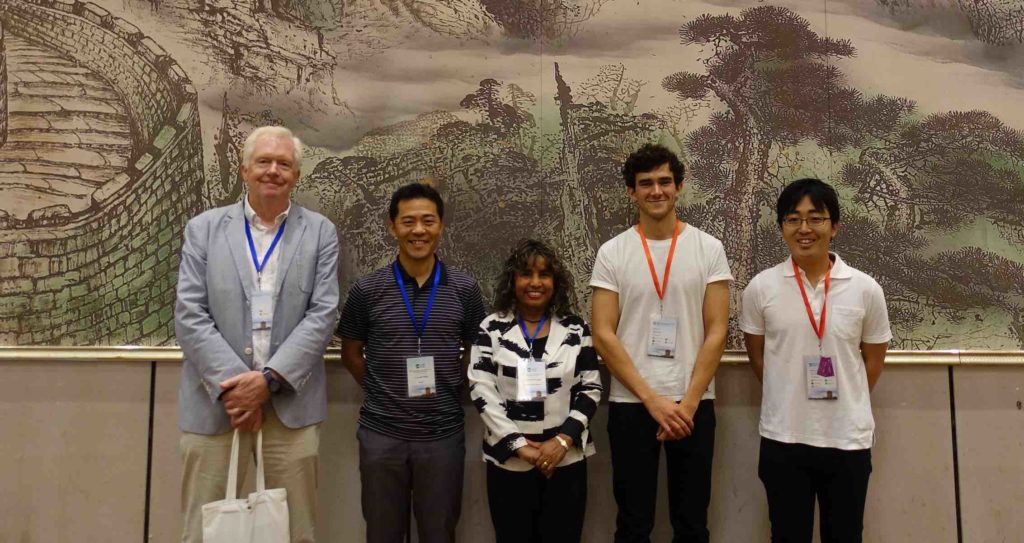
On the 19th June, the GPC team held the second of these workshops “Communicating your science to the broader community” addressed especially for early career researchers. Over 45 people attended. This meeting was led by Isabel Mendoza with the cooperation of Mary Williams (@PlantTeaching) and Geraint Parry (@GARNetweets). The meeting provided participants with clues on how to increase the impact of their own research, helping them understand the rules of science communication and tricks on how to profit from the more commonly used online channels.
This was the first dissemination activity of the recently established Early Career Researcher International (ECRi) network, an initiative that aims to help the ECRs in developing their careers. A dedicated post on the issues discussed at the workshop is on development. Stay tuned!
This week’s post was written by Jonathan Ingram, Senior Commissioning Editor / Science Writer for the Journal of Experimental Botany. Jonathan moved from lab research into publishing and communications with the launch of Trends in Plant Science in 1995, then going on to New Phytologist and, in the third sector, Age UK and Mind.
In this week of the XIXth International Botanical Congress (IBC) in Shenzhen, it seems appropriate to highlight outstanding research from labs in China. More than a third of the current issue of Journal of Experimental Botany is devoted to papers from labs across this powerhouse of early 21st century plant science.
Collaborations are key, and this was a theme that came up time again at the congress. The work by Yongzhe Gu et al. is a fine example, involving scientists at four institutions studying a WRKY gene in wild and cultivated soybean: in Beijing, the State Key Laboratory of Systematic and Evolutionary Botany at the Institute of Botany in the Chinese Academy of Sciences, and the University of the Chinese Academy of Sciences; and in Harbin (Heilongjiang), the Crop Tillage and Cultivation Institute at Heilongjiang Academy of Agricultural Sciences, and the College of Agriculture at Northeast Agricultural University. Interest here centers on the changes which led to the increased seed size in cultivated soybean with possible practical application in cultivation and genetic improvement of such a vital crop.
Botanic gardens are also part of the picture. In another paper in the same issue, Yang Li et al. from the Key Laboratory of Tropical Plant Resources and Sustainable Use at Xishuangbanna Tropical Botanical Garden in Kunming (Yunnan) and the University of the Chinese Academy of Sciences in Beijing present research on DELLA-interacting proteins in Arabidopsis. Here the authors show that bHLH48 and bHLH60 are transcription factors involved in GA-mediated control of flowering under long-day conditions.
Naturally, research on rice is important. Wei Jiang et al. from the National Key Laboratory of Crop Genetic Improvement, Huazhong Agricultural University (Wuhan) describe their research on WOX11 and the control of crown root development in the nation’s grain of choice, which will be important for breeders looking to increase crop yields and resilience.
The other work featured is either in Arabidopsis or plants of economic importance: Fangfang Zheng et al. (Qingdao Agricultural University, also with collaborators in Maryland) and Xiuli Han et al. (Beijing); Yun-Song Lai et al. (Beijing/Chengdu – cucumber), Wenkong Yao et al. (Yangling, Shaanxi – Chinese grapevine, Vitis pseudoreticulata), and Xiao-Juan Liu et al. (Tai-an, Shandong – apple).
Shenzehn has grown rapidly and is now highly significant for life science as home to the China National GeneBank (CNGB) project led by BGI Genomics. The vision as set out by Huan-Ming Yang, chairman of BGI-Shenzhen, is profound – from sequencing what’s already here, often in numbers per species, to innovative synthetic biology.
Shenzehn is also home to another significant institution, the beautiful and scientifically important Fairy Lake Botanic Garden. At the IBC, the importance of biodiversity conservation for effective, economically focused plant science, but also for so many other reasons to do with our intimate relationship with plants and continued co-existence on the planet, was a central theme.
The research highlighted in Journal of Experimental Botany is part of the wider, positive growth of plant science (and, indeed, botany) not just in China, but worldwide. The Shenzehn Declaration on Plant Sciences with its seven priorities for strategic action, launched at the congress, will be a guide for the right development in coming years.
 This week’s post was written by Harison Andriambelo, a PhD student at the University of Antananarivo, Madagascar. Harison was the awardee of the Early Career Researcher travel bursary from the Society for Experimental Biology in association with the Global Plant Council, enabling him to attend the State of the World’s Plants Symposium at the Royal Botanic Gardens, Kew. Here’s how he got on!
This week’s post was written by Harison Andriambelo, a PhD student at the University of Antananarivo, Madagascar. Harison was the awardee of the Early Career Researcher travel bursary from the Society for Experimental Biology in association with the Global Plant Council, enabling him to attend the State of the World’s Plants Symposium at the Royal Botanic Gardens, Kew. Here’s how he got on!
Attending the State of the World’s Plants Symposium 2017 at the Royal Botanic Gardens, Kew, was a fantastic opportunity for me to get a detailed insight into many aspects of plant conservation, including the latest emerging research. Scientists from all over the world attended the symposium and shared results from several ecoregions, including tropical, boreal, and temperate biomes. It was also great to visit the Gardens, which were looking amazing in the British summertime.
As a botanist from Madagascar, I found the focus session on conservation in my country particularly useful, and I really enjoyed the talks by Pete Lowry and George Schatz, both from Missouri Botanic Garden.
Other sessions in the conference highlighted important issues including fires and invasive species. We heard that fire is not always bad for plants, especially in savannah systems, where plant diversity is maintained by the fire regime. I believe better scientific communication to the public is urgently needed on this issue.
 Another great session concerned invasive species. I have worked across all the biomes in Madagascar, from humid forests to the dry spiny forest, and I have seen first-hand the effects invasive plants can have. A detailed assessment of invasive plant species in wetlands and in the western dry forests of Madagascar made me more aware of the potential impacts of these species. By attending this symposium, I learned about several programs and efforts by the Invasive Species Specialist Group and will spread information about invasive species management to colleagues once I return to Madagascar.
Another great session concerned invasive species. I have worked across all the biomes in Madagascar, from humid forests to the dry spiny forest, and I have seen first-hand the effects invasive plants can have. A detailed assessment of invasive plant species in wetlands and in the western dry forests of Madagascar made me more aware of the potential impacts of these species. By attending this symposium, I learned about several programs and efforts by the Invasive Species Specialist Group and will spread information about invasive species management to colleagues once I return to Madagascar.
For me, the highlight of the session on medicinal plants was a talk by the President of Mauritius. It was inspirational to see that scientists can even become a head of state. Such leadership offers great promise for addressing environmental issues at national scale. I am certain that having an ecologist as President in Madagascar would allow much greater progress on conservation issues in my home country, which has many highly threatened endemic species. Scientists can bring their understanding and ability to analyze complex systems to bear on policy. Good leaders can take a long-term holistic view and accord the appropriate priority to the environment in national plans for development.
This symposium allowed me to present some results of my research activities in Madagascar and get feedback from an international group of scientists. A deep discussion with people working at RBG Kew about how to scale information on tree dispersal processes from the plot to landscape scales was very valuable. As they know the Madagascan context, they were very interested in my results and a possible collaboration is on its way.
Finally, this trip to London allowed me to spend more time with my colleague Dr Peter Long at the University of Oxford and to make good progress for my scientific research activities. I am very grateful to the Society for Experimental Biology for supporting my travel to the UK to participate in this meeting.
In October 2015, researchers from around the world came together in Iguassu Falls, Brazil, for the Stress Resilience Symposium, organized by the Global Plant Council and the Society for Experimental Biology (SEB), to discuss the current research efforts in developing plants resistant to the changing climate. (See our blog by GPC’s Lisa Martin for more on this meeting!)
Building on the success of the meeting, the Global Plant Council team and attendees compiled a set of papers to provide a powerful call to action for stress resilience scientists around the world to come together to tackle some of the biggest challenges we will face in the future. These four papers were published in the Open Access journal Food and Energy Security alongside an editorial about the Global Plant Council.
In the editorial, the Global Plant Council team (Lisa Martin, Sarah Jose, and Ruth Bastow) introduce readers to the Global Plant Council mission, and describe the Stress Resilience initiative, the meeting, and introduce the papers that came from it.
In the first of the commentaries, Matthew Gilliham (University of Adelaide), Scott Chapman (CSIRO), Lisa Martin, Sarah Jose, and Ruth Bastow discuss ‘The case for evidence-based policy to support stress-resilient cropping systems‘, commenting on the important relationships between research and policy and how each must influence the other.
Global Plant Council President Bill Davies (Lancaster University) and CIMMYT‘s Jean-Marcel Ribaut outline the ways in which research can be translated into locally adapted agricultural best practices in their article, ‘Stress resilience in crop plants: strategic thinking to address local food production problems‘.
In the next paper, ‘Harnessing diversity from ecosystems to crops to genes‘, Vicky Buchanan-Wollaston (University of Warwick), Zoe Wilson (University of Nottingham), François Tardieu (INRA), Jim Beynon (University of Warwick), and Katherine Denby (University of York) describe the challenges that must be overcome to promote effective and efficient international research collaboration to develop new solutions and stress resilience plants to enhance food security in the future.
University of Queensland‘s Andrew Borrell and CIMMYT‘s Matthew Reynolds discuss how best to bring together researchers from different disciplines, highlighting great examples of this in their paper, ‘Integrating islands of knowledge for greater synergy and efficiency in crop research‘.
In all of these papers, the authors suggest practical short- and long-term action steps and highlight ways in which the Global Plant Council could help to bring researchers together to coordinate these changes most effectively.
Read the papers in Food and Energy Security here.
The Society for Experimental Biology have very kindly offered to sponsor one early career researcher (PhD student or postdoctoral researcher within five years of obtaining PhD) to attend the State of the World’s Plants Symposium 2017 at the Royal Botanic Gardens, Kew (UK). The recipient will receive up to £1000 to support their meeting registration, travel, and accommodation costs to attend the meeting, which will be held at the Jodrell Laboratory, RBG Kew, on the 25th and 26th May 2017.
The bursary is offered to promote the international collaboration goals of the Society for Experimental Biology and the Global Plant Council, and applications from all countries are welcomed.
In return for this generous bursary, the student will be expected to write a 500-1000 word blog post about the meeting for the Global Plant Council blog.
In order to be eligible for the State of the World’s Plants bursary, you must be:
To apply for this bursary, please send an email containing the following information to Sarah Jose (sarah@globalplantcouncil.org) by 9 am (BST) on Tuesday 18th April 2017:
New Breeding Technologies in the Plant Sciences – Applications and Implications in Genome Editing
Gothenburg, Sweden, 7-8th July 2017
REGISTRATION FOR THIS MEETING IS NOW OPEN!
Organised by: Dr Ruth Bastow (Global Plant Council), Dr Geraint Parry (GARNet), Professor Stefan Jansson (Umeå University, Sweden) and Professor Barry Pogson (Australian National University, Australia).
Targeted genome engineering has been described as a “game-changing technology” for fields as diverse as human genetics and plant biotechnology. Novel techniques such as CRISPR-Cas9, Science’s 2015 Breakthrough of the Year, are revolutionizing scientific research, allowing the targeted and precise editing of genomes in ways that were not previously possible.
Used alongside other tools and strategies, gene-editing technologies have the potential to help combat food and nutritional insecurity and assist in the transition to more sustainable food production systems. The application and use of these technologies is therefore a hot topic for a wide range of stakeholders including scientists, funders, regulators, policy makers and the public. Despite its potential, there are a number of challenges in the adoption and uptake of genome editing, which we propose to highlight during this SEB satellite meeting.
One of the challenges that scientists face in applying technologies such as CRISPR-Cas9 to their research is the technique itself. Although the theoretical framework for using these techniques is easy to follow, the reality is often not so simple. This meeting will therefore explain the principles of applying CRISPR-Cas9 from experts who have successfully used this system in a variety of plant species. We will explore the challenges they encountered as well as some of the solutions and systems they adopted to achieve stably transformed gene-edited plants.
The second challenge for these transformative technologies is how regulatory bodies will treat and asses them. In many countries gene editing technologies do not fit within current policies and guidelines regarding the genetic modification and breeding of plants, as it possible to generate phenotypic variation that is indistinguishable from that generated by traditional breeding methods. Dealing with the ambiguities that techniques such as CRISPR-Cas9 have generated will be critical for the uptake and future use of new breeding technologies. This workshop will therefore outline the current regulatory environment in Europe surrounding gene editing, as well as the approaches being taken in other countries, and will discuss the potential implications and impacts of the use of genome engineering for crop improvement.
Overall this meeting will be of great interest to plant and crop scientists who are invested in the future of gene editing both on a practical and regulatory level. We will provide a forum for debate around the broader policy issues whilst include opportunities for in-depth discussion regarding the techniques required to make this technology work in your own research.
This meeting is being held as a satellite event to the Society for Experimental Biology’s Annual Main Meeting, which takes place in Gothenburg, Sweden, from the 3–6th July 2017.
Lisa Martin, GPC Outreach & Communications Manager
GPC Executive Director Ruth Bastow and I recently travelled to Australia to hold the GPC’s annual general meeting – but we didn’t go all that way for a one-day meeting! We also took the opportunity to attend ComBio 2016, a large conference jointly hosted by the Australian Society for Biochemistry and Molecular Biology, the Australia and New Zealand Society for Cell and Developmental Biology, and GPC Member Organization the Australian Society of Plant Scientists.
Sadly, one person was conspicuous by his absence – GPC President Bill Davies, who had been due to give more than one talk at the conference, was unable to fly out to Australia at very short notice. While Ruth and our Chair Professor Barry Pogson could cover his talk during the GPC’s own lunchtime symposium, this left Dr Rainer Hofmann’s ‘Abiotic Stress and Climate Change’ session one speaker short at the last minute!
Fortunately Rainer, who happens to be a representative to the GPC for the New Zealand Society of Plant Biology, found a quick solution to the hole in his program: it was time for a bit of audience participation!
The ‘flipped classroom’ is an approach I’d heard of, but was not overly familiar with – however, according to Rainer it is used quite extensively in New Zealand, where plant biologists can be geographically isolated. Unlike the traditional university lecture, in which the teacher gives a presentation and the students go away to consolidate what they have learned with revision notes or problems to solve, the flipped classroom turns this model on its head. Instead, students are given the subject content to learn in advance, then bring their own questions to the lecture.
Arguably, this approach makes better use of students’ contact time and the lecturer’s expertise, and provides a richer and more independent learning experience. This model also works very well in distance learning: topic notes and presentation slides can be emailed out in advance, then a video-linked webinar can be used to connect students and teachers, and a web-tool like Socrative Student can be used to ask and answer questions online.
It’s all rather high-tech here in the abiotic stress session! We’re using Socrative Student to poll the audience in real time! #combio2016
— Global Plant Council (@GlobalPlantGPC) October 4, 2016

Answers to the question, “What are key solutions to address these challenges, in the next 3 years and in the longer term?”
Rainer used this idea to fill the gap in his symposium – and it was great! He asked three important questions, and members of the audience were invited to provide short answers via the Socrative Student platform using their computers, cell phones or tablets – answers were then displayed on a screen in real time. Thank goodness for WiFi! The questions and answers can be seen in the word clouds we’ve created here – the size of the word provides an indication of the frequency of that particular response, so it’s easy to see which were the most and least popular answers. These responses provided useful, engaging stimuli for audience-led discussion – I’d really like to see this model used at other meetings!
The three questions asked were:
What would your answers have been? Leave us a comment below!
 Lisa Martin, GPC Outreach & Communications Manager
Lisa Martin, GPC Outreach & Communications Manager
As a truly global organization, the Global Plant Council hosts its annual general meeting (AGM) on a different continent each year, to give our members from far-flung corners of the globe the opportunity to come together to celebrate progress and discuss future strategies to develop plant science for global challenges.
With our current Chair Professor Barry Pogson hailing from ‘down under’, this year’s AGM was held in Brisbane, Australia, which made for a warm, sunny change from autumnal London for Ruth and I!
Starting bright and early at 8 am on Monday 3rd October, representatives from the GPC’s member societies joined the GPC’s Executive Board at a hotel in Brisbane’s central business district. After a welcome from the Chair, and a minute’s respectful silence to remember our former Board Member Professor Carl Douglas, who sadly passed away earlier this year, introductions were made and we got down to business. Ruth and myself first provided introductions to, and updates on, the main GPC initiatives and activities.
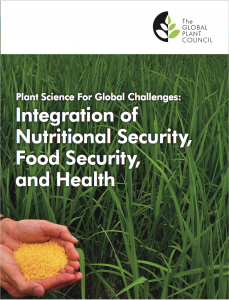
While waiting for our Stress Resilience white paper to be published, why not read our Nutritional Security report? (Link opens PDF – right-click and save-as to download a copy to your computer!)
The DivSeek initiative continues to grow in strength and numbers, with 67 partner organizations now committed to working together to address genomic and phenomic data challenges in plant science. With funding from the UK’s Biotechnology and Biological Sciences Research Council Ruth has been providing essential coordination services specifically for this project, and with DivSeek Chair (Professor Susan McCouch) and a Steering Committee in place, the initiative is making real progress; a number of working groups have been launched to actively engage DivSeek partners and help the initiative advance its mission and aims.
Our other major, current initiative is in the area of Stress Resilience. As you may have read around this time last year, the GPC held a workshop and discussion forum on the subject of ‘Stress Resilient Cropping Systems for the Future’, in conjunction with our 2015 AGM in Brazil. This successful two-day event brought together experts in this area to share and showcase new research, tools and techniques. We are now turning our discussions from this meeting into a forthcoming white paper, and hopefully a commentary or two for publication in a high impact journal – we’ll let you know when these have been launched!
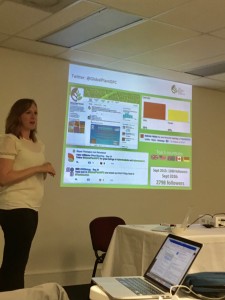
Lisa talked to the Global Plant Council about our successful outreach and communications activities. Do you follow us on Twitter or Facebook?
Then it was my turn to speak on the subject of outreach and communication. With much help from our New Media Fellow (NMF) Sarah Jose (and our former NMF Amelia-Frizell Armitage, who left the GPC for a new job earlier this year), the GPC’s social media efforts have been tremendously successful this year. We now have nearly 3000 followers on Twitter, hundreds of ‘fans’ on Facebook, and over 1200 subscribers to our monthly e-Bulletin (though readership is much wider, thanks to many of our Member Organizations who also distribute this newsletter!). We were also pleased to welcome Current Plant Biology to our journal supporters; they join Journal of Experimental Botany, Nature Plants and New Phytologist in providing some financial sponsorship to support our outreach efforts.
In other activity updates, we discussed Plantae, the social media-cum-knowledge hub that the GPC has been working on developing with the American Society of Plant Biologists. Plantae is in beta testing mode to capture feedback on the design and user experience, but is growing and evolving all the time. We encourage you to register an account and sign up, if you haven’t already done so!
Sadly our President Bill Davies was unable to attend the AGM, but Ruth and Barry explained the premise of a new GPC Knowledge Exchange initiative that Bill is working hard to get off the ground. If successful in securing funding to progress this project, we hope to be involved with the development of an online training platform to transfer knowledge from the laboratory to the field – an exciting idea that will, we hope, be of invaluable benefit to communities in developing regions.
 As with many research networks and non-profit organizations, securing long term funding for the GPC is a continual challenge. The GPC’s main source of income is its member organizations; a revised membership fee structure was agreed at last year’s AGM, but further refinement and additional sources of funding will be required to ensure the continued sustainability of the GPC. As such we are actively seeking donations to help us continue the work of GPC so if you would like to make a contribution to support our efforts, you can do so via our PayPal giving link here: https://globalplantcouncil.org/donate.
As with many research networks and non-profit organizations, securing long term funding for the GPC is a continual challenge. The GPC’s main source of income is its member organizations; a revised membership fee structure was agreed at last year’s AGM, but further refinement and additional sources of funding will be required to ensure the continued sustainability of the GPC. As such we are actively seeking donations to help us continue the work of GPC so if you would like to make a contribution to support our efforts, you can do so via our PayPal giving link here: https://globalplantcouncil.org/donate.
Happily, we are pleased to welcome three new affiliate members to our ranks – the Center for Plant Aging Research in Korea, the Max Planck Institute for Molecular Plant Physiology in Germany, and the ARC Centre of Excellence in Plant Energy Biology in Australia.
Before discussing the GPC’s vision for the future, we took the opportunity to hear from our Member Organizations about what they would like the GPC to do for them, and what they can do for us. Lots of excellent suggestions for cross-collaborations, outreach, and novel funding sources were made, and we will be eagerly following up on these in the coming months – watch this space!
In addition to the AGM GPC also hosted a lunchtime symposium during the ComBio 2016 meeting, entitled, “Addressing Global Challenges in Plant Science: the Importance of Co-operation beyond National Boundaries”. During this session, we showcased exemplar projects involving multi-national stakeholders, stressing that global challenges need global solutions, and highlighting the unique and essential role that GPC plays.
Ruth spoke about DivSeek, GPC Treasurer Vicky Buchanan-Wollaston spoke about our Stress Resilience initiative, and Barry provided an overview of the Nutritional Security Initiative and also filled in for Bill by talking about our proposed plans for the knowledge exchange platform mentioned above. Professor Andy Borrell from the University of Queensland also gave an engaging and insightful talk about why a transnational approach to plant, crop and agricultural science is needed, highlighting some of the real-world scenarios where the GPC might offer practical, proactive support for research across borders.
It was fantastic to see over 70 plant scientists who gave up their lunchtime to attend our symposium – there were plenty of questions and very positive feedback at the end that we hope this will spark new ideas, interactions and collaborations. We felt very encouraged by the interest in and support for the GPC and its initiatives, and look forward to being able to continue serving the global plant science community.